
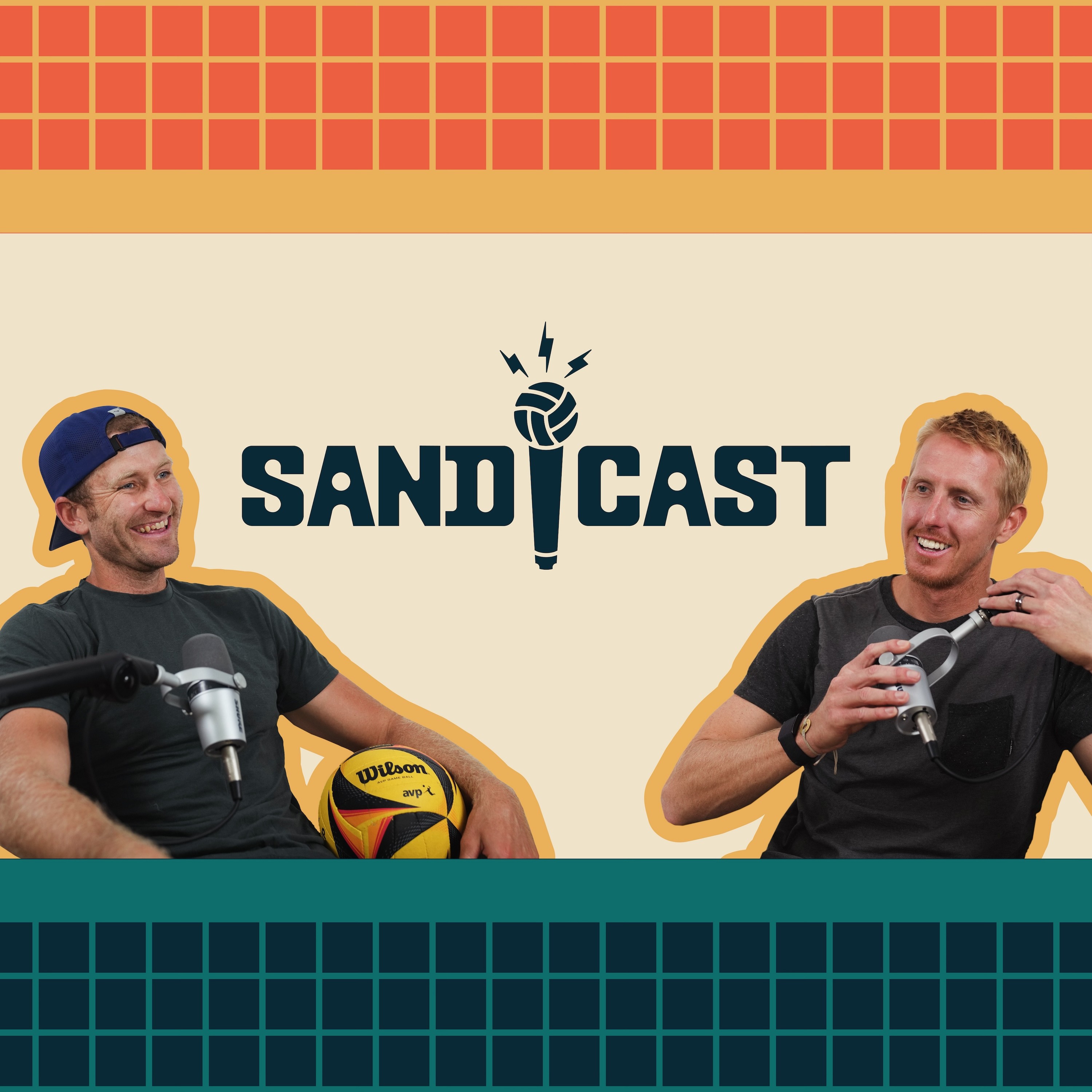
1.1M
Downloads
465
Episodes
SANDCAST is the first and leading beach volleyball podcast in the world. Hosts Tri Bourne and Travis Mewhirter take listeners into the world of the AVP, Volleyball World Beach Pro Tour and any other professional beach volleyball outlets, digging deep into the lives of the players both on and off the court as well as all of the top influencers in the game.
Episodes
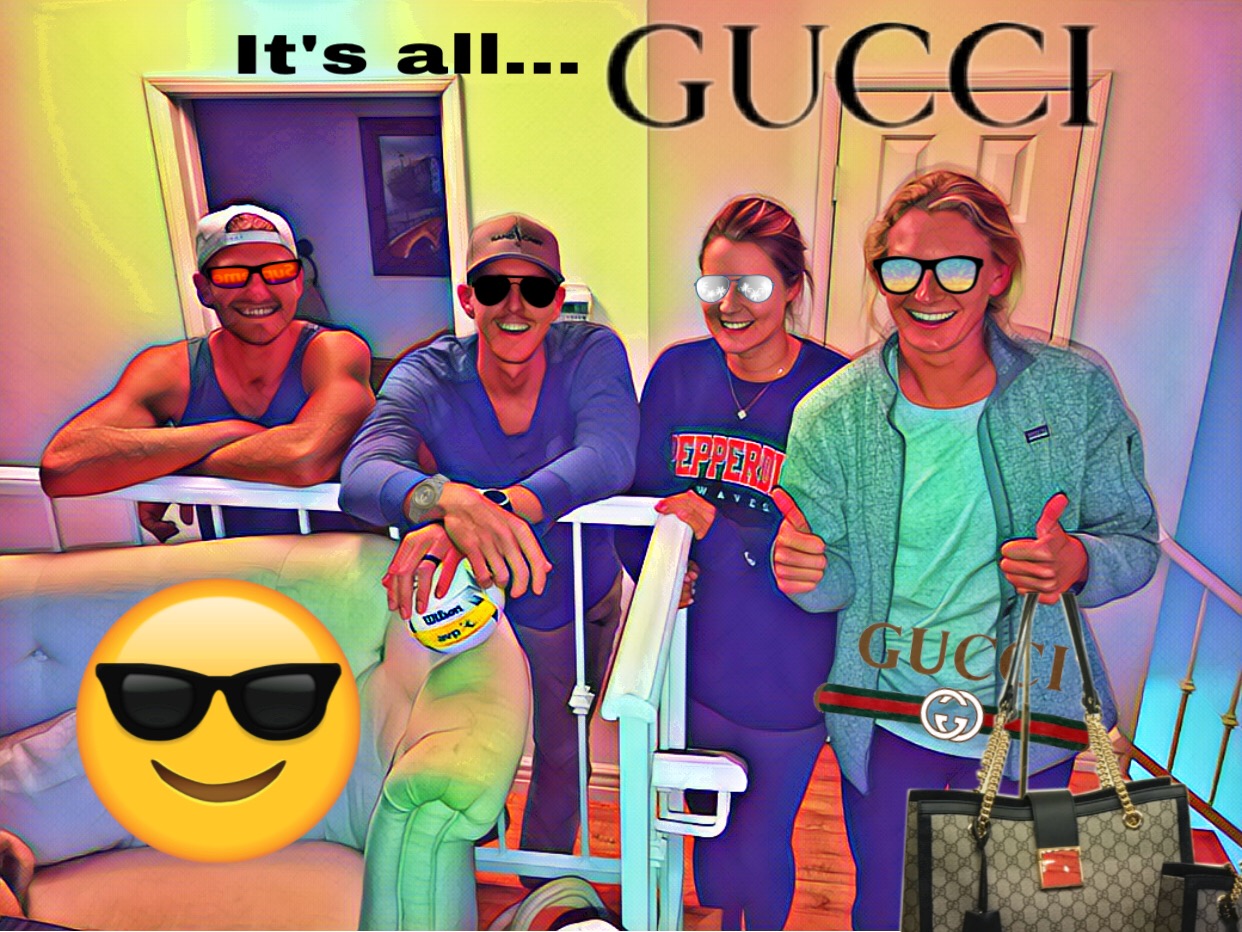
Wednesday Apr 25, 2018
For Kelly Reeves and Brittany Howard, it's all gucci vibes
Wednesday Apr 25, 2018
Wednesday Apr 25, 2018
It would seem that Kelly Reeves and Brittany Howard have been playing together for years. At the very least, it would seem as if they’ve been close for quite some time. They smile constantly. Laugh even more.
On more than one occasion on SANDCAST: Beach Volleyball with Tri Bourne and Travis Mewhirter, one finished the other’s sentence or filled in a blank.
Little about their natural chemistry, which is evident both on a volleyball court and in a podcast studio, suggests that the two have only recently begun a partnership and, by extension, deepening a friendship.
And yet here they are, exactly two tournaments in, complete with two bronze medals in a pair of NORCECA events, in Aguascalientes and La Paz, respectively, with a main draw just one week away for FIVB Huntington Beach.
For Reeves, this is no longer a novel concept, to pick up with a new partner and enjoy immediate success. She’s done this at every level of her career. Doesn’t matter if it was at Cathedral Catholic High School, where she won four straight CIF titles and graduated as the all-time kills and digs leader in San Diego County.
“I think that’s been passed,” she said, laughing.
She one-upped herself at UCLA, winning a national championship indoors in 2011 –- technically, she was also a member of the 1991 national championship winning team, rooting on the Bruins from the womb as her mother, Jeanne, was an assistant coach -- before hitting the beach and becoming the first UCLA All-American on the sand.
The AVP was no different, either. Reeves’ career began in 2016, in Huntington Beach, and a fifth-place finish with Ali McColloch assured her that she wouldn’t have to grind through an AVP qualifier again. She was named rookie of the year, and a year later, partnered with Jen Fopma, she reached the semifinals twice.
Two events into the 2018 season, she’s matched that total, with a partner who is a bit stunned herself by the pair’s quick success.
“A year ago, if you would have told me this is where I would be, that I’d be partnered with Kelly Reeves, playing in a NORCECA, I would definitely not believe you,” Howard said. “It’s just been really cool and awesome experience.”
A year ago, Howard had no plans to play AVP at all. After graduating from Stanford with a degree in Science, Technology and Society, Howard had a job offer in El Segundo. She planned to take it, maybe play in a few CBVAs. Nothing more, save for maybe the occasional local AVP tournament.
But Corinne Quiggle, her partner at Pepperdine, where Howard competed for a fifth year as a grad student, asked if Howard might want to play a few, beginning with New York in early June. They had just come off a third place finish at the USAV Collegiate Beach Championships, pushing USC’s indomitable duo of Sara Hughes and Kelly Claes to three sets.
Why not?
So off to New York they went –- and lost in the first round of the qualifier. Then to Seattle with the same result. San Francisco saw a second-round exit before a breakthrough in Hermosa and Manhattan Beach, where they coasted through both qualifiers in straight sets.
By season’s end, Howard, who had no plans to play on the AVP Tour, was a three-time main-draw player, a stunningly fast learning curve from a girl who readily admits she had a “rough start” to the beach at Pepperdine.
The rough start is firmly in the rearview, as Howard, technically still a rookie, is now partnered with one of the most athletic defenders on Tour, taking thirds in NORCECAs, enjoying champagne showers before the season has really even begun.
“We definitely celebrated on the podium for sure,” Reeves said, laughing. “That was my first time doing the champagne and I just sent it. Full send … It was our last pair of nice clothes and we were just drenched in champagne.”
A good problem to have.
Or, rather, as the ever-affable Reeves is prone to saying: A “Gucci” problem to have.

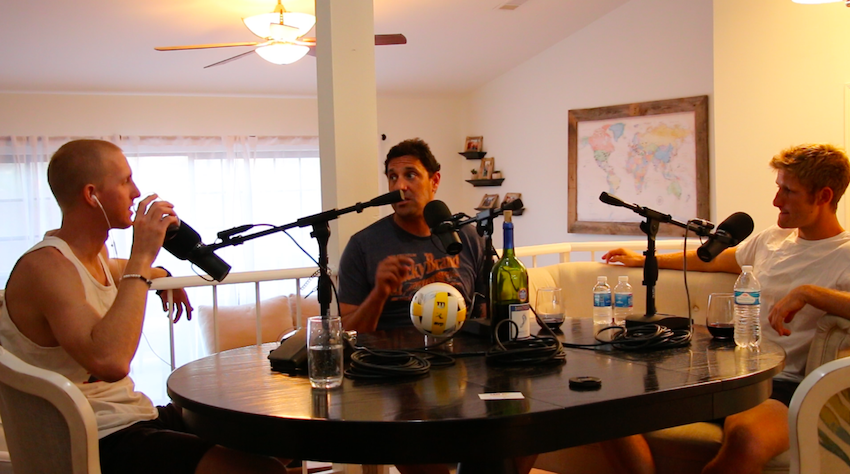
Wednesday Apr 18, 2018
Jose Loiola's legend only continues to grow
Wednesday Apr 18, 2018
Wednesday Apr 18, 2018
To read through the old LA Times archives, to dig through all of the gushing, flattering pieces, is to remember Jose Loiola as a man of near mythical proportions, a beach volleyball Paul Bunyan. How hard he could hit! How high he could jump! How entertaining he was to watch! How loud and brash and charismatic he was!
Loiola laughs at those memories. He laughs through a glass of wine, even though he has sworn off alcohol during the week.
It’s just one glass, right?
Nothing compared to what he and the boys could put down during the 90s, when the AVP was a rollicking party dishing out tens of millions per year and Brazil was in its nascent stages of becoming a bona fide beach volleyball power.
Loiola was the first, and for the 48-year-old there is no forgetting the day he and Eduardo Bacil took down the Gods. Back then, in the late 80s and early 90s, the Gods were known as Smith and Stoklos.
In the 86, 87 and 88 seasons, Sinjin Smith and Randy Stoklos would win 44 of 71 AVP tournaments and three of four FIVBs. You could count on one hand the teams who had a shot at beating them, and Jose Loiola would not have been among them.
It is with a delicious stroke of irony that Loiola and Bacil, a fellow Brazilian, stunned the Americans in their primes. Beach volleyball had been a weekend activity in Brazil prior to 1987. Nothing more. It was a soccer-mad state with beautiful beaches and recreational volleyball.
It was Smith who had a vision for the sport to grow internationally, Smith who worked with then-FIVB president Ruben Acosta to grow the game overseas, Smith who helped form an exhibition match in Rio de Janeiro, awakening the dormant beach volleyball giant that is the nation of Brazil.
Without Smith’s and Acosta’s efforts to establish the game in Brazil when they did, it’s quite possible we might never have heard of Loiola and Bacil. Without the FIVB establishing a beach volleyball branch to its indoor league, there may not be beach volleyball in the Olympic Games, and by extension no reason for Americans to pay attention to Brazilian beach volleyball at all.
But in 1993 there was no longer a choice. They had to watch, and with rapt attention, as Loiola and Bacil, who earned a wildcard to a pair of AVP events, in Fort Myers and Pensacola to begin the season, and then made every main draw after that on points, established themselves as one of the only international teams who could be reasonably expected to beat the Americans.
“I had the opportunity to play with and against the players I had grown up idolizing, the players I had grown up watching,” Loiola said on SANDCAST. “To me, that was the best thing. I’m competing with them and I’m beating all of them. From that point on, I realized if I put my time in and I become more professional and learn the hoopty-hoops, with the discipline and the perseverance, I knew I was going to get far.”
Loiola is not a man prone for understatement, and yet for him to describe his career as able to go far, and not to distances never before seen by a Brazilian beach volleyball player, is an understatement indeed. For at the end of that 1993 season, Loiola had been awarded the AVP Rookie of the Year, the first international player to do so.
In ’95, playing in an indoor beach tournament in Washington D.C., he and Bacil beat Stoklos and Adam Johnson in the finals, marking the first time an international team had claimed an AVP title.
“The AVP was the NBA of volleyball,” Loiola said. “It attracted the best players on the planet. It was, by far, the best tour.”
So much so that the AVP’s status as the premiere tour began to create animosity both in the U.S. and elsewhere. The Brazilian federation wanted Loiola to quit playing on the AVP and join the Brazilian national team so he could represent his native country in the 1996 Olympics, its inaugural year as an Olympic sport. The Americans, meanwhile, fought over a similar fault line: Why would they compete on the FIVB, an inferior tour with inferior money, to qualify for the Olympics? What could possibly compel them to travel overseas to play in a tournament for less prize money, against teams that couldn’t compete on the AVP, rather than stay home and play against the best?
While the Americans fought for a U.S.-based Olympic trial, Loiola demurred. He wasn’t going home to compete for a Brazil on the FIVB. He didn’t care about the Olympics. He cared about playing against the best.
And in those halcyon days, the AVP featured the best.
“In 1996, I had the choice,” Loiola said. “Either I go to the Olympics or I stay here and play AVP. I didn’t go to the Olympics. Why would I want to go to the Olympics when I could stay here, play 25 or 26 tournaments, making three times more money, why would I want to go to the FIVB and travel all over the world?”
He didn’t, choosing to remain in America while Brazil sent Emanuel Rego and Ze Marco de Melo and Roberto Lopes and Franco Neto to Atlanta. Neither finished better than ninth.
Loiola had no real reason to change course. Named the AVP Offensive Player of the Year from 1995-1998, he was one of the best players in the world playing on the best tour, with the top competition and more prize money than the sport had ever seen.
And then the AVP tanked.
Years of financial mismanagement had been masked by packed stadiums and electrifying volleyball and a rabid fan base. In 1997, the façade crumbled.
The AVP went bankrupt. The script had been flipped. To the FIVB Loiola went, rising up the world rankings with Rego, winning the FIVB World Championships in 1999, holding the No. 1 ranking heading into the 2000 Olympics, in Sydney, only to succumb in a stunning upset, finishing ninth.
“We just had a bad game,” Loiola said. “No excuses. Sometimes that just happens.”
It is one of the great shames of the sport that beach volleyball success is measured by Olympic success, for Loiola would never return to the Games. His hips went bed, to the point that he said he “was playing on one leg.”
His final event came in 2009, in Atlanta with Larry Witt. He’s since been inducted into the CBVA Hall of Fame, the International Volleyball Hall of Fame, the Volleyball Hall of Fame.
A living legend. And one who’s now imparting his wisdom on the next generation of them, serving as the coach of Sara Hughes and Summer Ross.
The fire’s still burning, the embers still hot, even as a coach. So disappointed was he after Hughes and then-partner Kelly Claes finished ninth in Fort Lauderdale that he hopped on the first flight out.
Now it’s Hughes and Ross.
He loves Hughes’ fire, Ross’ spunk. He wants to win FIVB Huntington Beach in the first week of May, knowing how much it would mean to Hughes, a Huntington native.
“That’s the one we want to win,” Loiola said. “In our home, our homeland. We’re excited, we’re on the right track. It’s just a matter of time.”
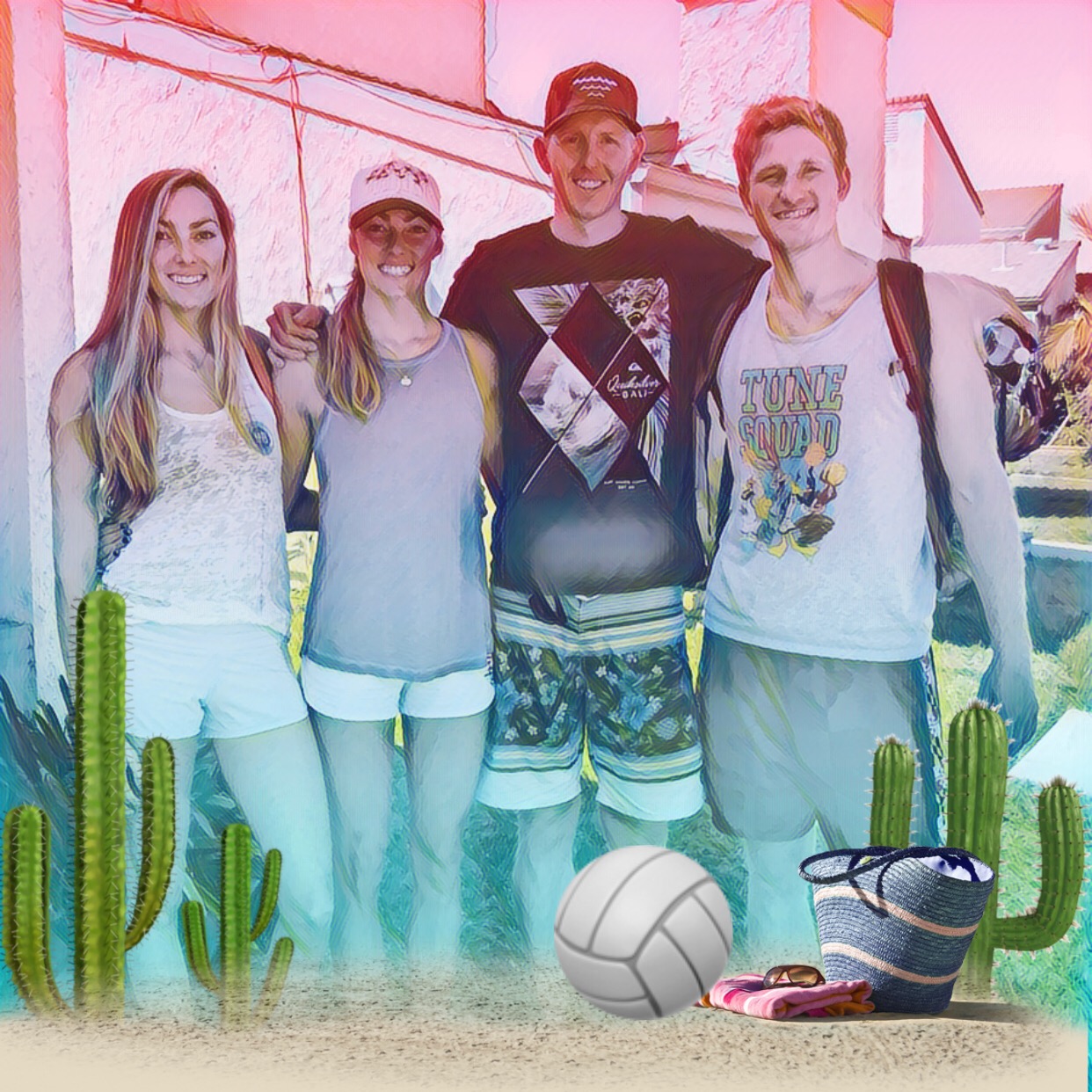
Wednesday Apr 11, 2018
'Weird-athletic, scrappy twig-noodle' Witt sisters prepared for rookie seasons
Wednesday Apr 11, 2018
Wednesday Apr 11, 2018
Don’t let these Witts fool you, with their Colgate smiles and constant giggles and impossibly amiable personalities.
Then again, how could you not be fooled?
Was that McKenna in the Oakleys or Madison? Wasn’t McKenna on the right? Or did they switch?
Hold on…it was Madison with the 4-centimeter tear in her ab…right? Or was that the other one, the one who looks just like her, down to the cascade of dirty blonde hair and almond-shaped eyes and what they call “twig-noodle” frames?
Kerri Walsh couldn’t figure it out when she played the Witts in 2016. Neither could their high school teachers on the one occasion they swapped places in math and Spanish, though so overwhelming was their guilt and nerves that they never did it again.
“I was so nervous,” McKenna Witt, now McKenna Thibodeau, said.
Yes, the Witt sisters are technically no longer. McKenna is now a Thibodeau, and Madison, recently engaged, will soon become a Willis.
The Thibodeau-Willis sisters don’t exactly have the same ring as the Witt Sisters. No matter. They still have the same identical looks, despite an NVL official once attempting to change that, marking Madison with a No. 1.
Or hold on. Was that McKenna?
Not that it mattered. She washed it off anyway. McKenna had a tear in her ab, and she wasn’t going to be picked on. Beyond that, Madison wasn’t going to let another team complain about playing a pair of identical twins, especially when one of them is injured, and exposing which one that was could mean furthering the injury.
Simply put: You don’t mess with a Witt, and you certainly don’t mess with one when the other is on the same court.
“We’re fierce competitors,” Madison said,. Killers with a smile.
So hungry for success are they that in less than five years playing beach volleyball they’ve become All-Americans, finished their four years at Arizona with an 85-33 record, qualified for an AVP in San Francisco in 2016, grinded through an NVL qualifier in 2017 and advanced to the semifinals, picked up their Masters degrees doing a grad year indoors with Cal Baptist all the while planning McKenna’s wedding.
Now they’re the poster girls for P1440, selected as one of the tour’s developmental teams.
It appears to have been a smooth ride for the Witts. Little turbulence, few setbacks, the American Dream from a pair of sisters who are as likable as they are marketable. Their path has been quite the contrary, and they like it that way.
They love telling the story about how they were cut from their seventh-grade team, touching a ball for the first time in an organized setting in eighth grade. They aren’t necessarily enamored with their 13-15 record at Arizona as freshmen, but they’re able to look back upon it with fondness, for prior to the season, they had to relearn how to throw a ball, let alone hit one. They’re not kidding, either. Their coach, Steve Walker, didn’t like how they threw a ball, which replicates the mechanics for an arm swing. So in their first week as collegiate beach volleyball players...they threw volleyballs.
“Looking back, we loved the process,” Madison said. “Steve would always say ‘Rome isn’t built in a day’ and man is that true… The process is beautiful. You don’t grow on mountaintops.”
They didn’t. And their steep growth created a style they refer to as “scrappy, weird athletic, and fun.”
The weird athletic can be up for interpretation. The fun part is not. They’re contagious, these Witts, forever smiling, laughter providing the soundtrack to their conversations, humble from an upbringing ground in faith.
“We’ll do whatever is takes to win,” McKenna said. “But we’ll still be nice.”
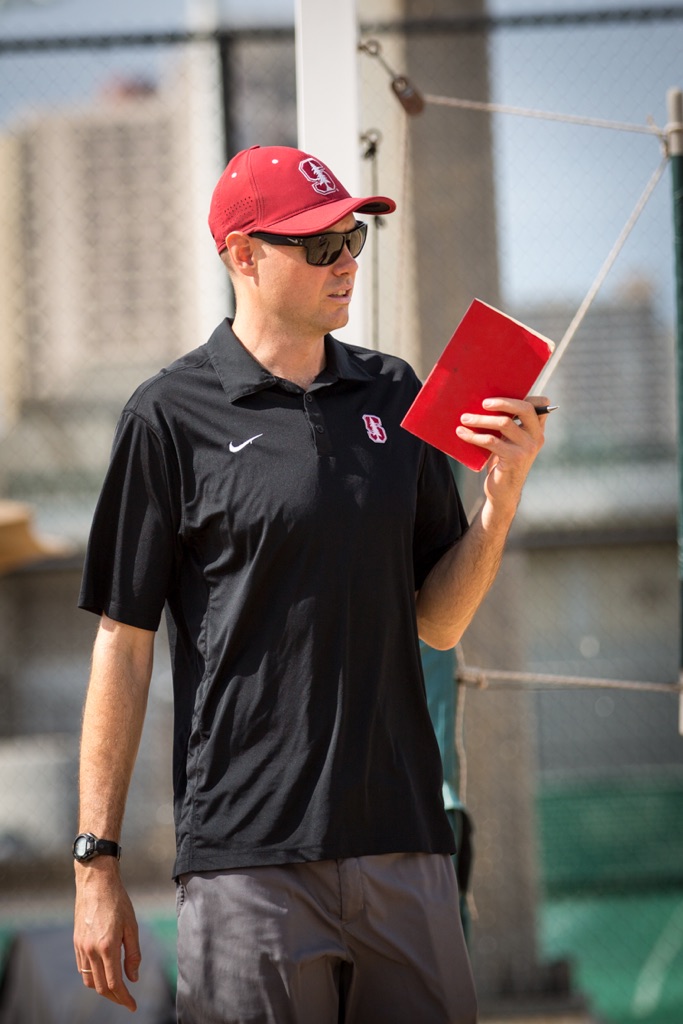
Wednesday Apr 04, 2018
Stanford beach volleyball continues to strive for more, with Andrew Fuller
Wednesday Apr 04, 2018
Wednesday Apr 04, 2018
Stanford beach volleyball is, in one aspect at least, no different than any other athletic team in that every member has their role. Like, say, the player whose job it is to remind everyone of their inevitable mortality, and that all things should be taken in perspective.
Or the one who brings in studies on the positive impact of placebo effects.
Or the researcher who is studying the physiological effects of forgiveness.
Or the yoga instructor. Or the Olympic assistant coach.
Or the sports psychologist, who “does sessions with the team that are very different,” coach Andrew Fuller said on SANDCAST: Beach Volleyball with Tri Bourne and Travis Mewhirter. “We’re inserting different voices and perspectives and voices into their world, because you never know what’s going to stick… People at the national level don’t have this type of support.”
Welcome to Stanford, the most academically rigorous and, almost paradoxically so, one of the most athletically competitive universities in the country, with the resources and exceptional minds to prove it.
“One of the things that really excites me about being at Stanford is not only the abundance of resources but the level of access to the resources and I would be remiss if I was not taking advantage of people who aren’t just easily accessible but are super stoked on what’s happening in athletics and want to help out,” Fuller said. “I think there’s a particular irreverence to Stanford that I enjoy.”
That unique level of expectations, that irreverence, is as much an advantage as it is a challenge. Some schools, like LSU, for example, are limited geographically. Stanford’s excellence, and its demands to continue to be excellent, are, ironically, its biggest hurdle.
This year, 47,450 students applied to Stanford. Only 2,040 were admitted – 4.2 percent, the lowest acceptance rate in the country, ever.
“It’s very self-selecting, and we can have some conversations that are very brief,” Fuller said. “We can have a conversation with a young student-athlete who, athletically, is wonderful, and is perhaps a very good cultural fit for us. And then we see the transcript and the conversation just stops. Stanford’s a choice, and some students don’t want to do the work that is required to get there. It’s my belief that for some students, Stanford is worth the work. And is it going to be easy? Not at all. It’s going to be difficult. And people who are up to that challenge and go through it thrive at Stanford.”
Indeed. One in particular, a name volleyball fans are likely to become familiar with in the years to come, is Kathryn Plummer, Stanford’s 6-foot-6 sophomore who already owns a lengthy list of accolades – Pac-12 Freshman of the Year on the beach, the ESPN W Player of the Year indoors among them.
“She’s doing things from a technical standpoint we haven’t really seen in players her size, ever,” Fuller said. “If any listeners get to watch her, KP is hand setting every ball that she can. If she can get her hands on it, she will. I’m trying to remember the last player her size who has ever hand set. I would love it if someone could name someone who’s 6-foot-6 who’s saucing. She’s kind of breaking the history of someone what it means to be a tall player… The approach she’s taking and the chance she’s taking and the risk – those are the things I’m stoked about, the way she’s approaching the future of her game.”
Plummer is exceptional, yes. But her mind, her approach, is also befitting the Stanford culture – the top one percent of the one percent.
“I’ve learned that if I don’t have a damn good reason for doing something, they’re going to find the holes in it and just blow me up,” Fuller said, laughing. “That’s the greatest gift. Whether that’s some game or drill that I come up with, they’ll immediately pounce on the loophole of it and sometimes I’m like ‘You guys are right.’ They just crush me all the time. What’s that old adage? Surround yourself with people who are better than you? At any point, I am the dumbest person in the room.”
The dumbest person with a bachelor’s degree from Virginia Tech and an MFA from the Academy of Art in San Francisco, who also happened to have a fair volleyball career of his own.
Not a bad option to have for a head coach.
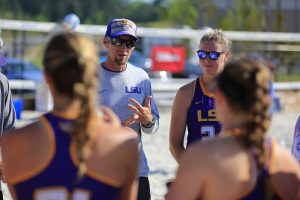
Wednesday Mar 28, 2018
LSU coach Russell Brock on building a beach power...without a beach
Wednesday Mar 28, 2018
Wednesday Mar 28, 2018
A common issue being navigated by the vast majority of college beach volleyball coaches: “What tools did they have in their indoor game?” LSU coach Russell Brock said. "Being able to evaluate them on film or in person, to be able to say ‘You know what, this is the stuff that’s going to translate really well to our game, or these are the things that are going to limit our ability to be successful on the short term.’ It’s gotta be a fast transition.
“What do they do well and how can I help them understand how it can directly translate to the beach game?”
Whether it’s LSU or USC or Pepperdine or UCLA, nearly every college beach coach will have to make that evaluation – how much of a player’s game will have to be modified from indoor to fit the sand?
Brock, though, and every other sand program not located on one coast or another, has another obstacle: How do you get volleyball players to play beach volleyball for a school that is nowhere near a beach?
LSU is located in Baton Rouge, a good four hour drive from Gulf Shores, Alabama, site of the NCAA Championships and likely the closest natural beach there is for the Tigers. It presents an obvious dichotomy from, say, USC, UCLA, Pepperdine, Hawaii, Long Beach State, Cal Poly, Loyola Marymount and a number of other programs that have a bounty of beaches to choose from.
Manhattan Beach or Hermosa? Santa Monica or Huntington?
LSU plays at a bar.
Ok. That sentence is misleading. Yes, Mango’s Beach Volleyball is a bar and restaurant, but it also comes equipped with 13 beach volleyball courts that are well-lit, well-maintained and as deep, if not deeper, than Manhattan Beach’s famously deep sand.
It is, objectively speaking, an excellent complex, one that prides itself on being the home of LSU beach volleyball.
But it’s not a beach. While as close a representation as a sand complex can get, Brock recognizes that the location of California alone is “just a massive advantage from a recruiting perspective,” he said. “And I went to [U]SC, so I understand the passion that’s involved with the tradition of all the schools out there with UCLA and Long Beach, and the girls who have wanted to go there growing up because their parents played and their grandparents played and it’s what they just do. Inevitably there’s a big advantage to that.
“The realistic perspective is, a lot of those players aren’t interested in leaving California, and I get it. I don’t hold it against them, it’s a beautiful place. There’s a ton of opportunities to play a sport at a really high level out there. For us, it’s about building our brand as a beach program to prove that we can play the game and play it well, to become attractive to people, regardless of where they’re from, to respect it and to know that we can train them and we can give them opportunities moving forward to continue to play the game and compete at the highest level. And that’s what takes time.”
But not, it seems, a tremendous amount of time. LSU is already one of the top programs in the country, consistently in the top 10 of the AVCA coaches poll, beginning the season at No. 6.
“We’re looking for the very best talent, wherever it might be,” Brock said. “We can’t care where they come from… and LSU is a pretty unique place. When people do move here from wherever they come from, they’re always impressed. There’s a lot of things that if you want it, we can provide it, and we can provide it at a super high level.”
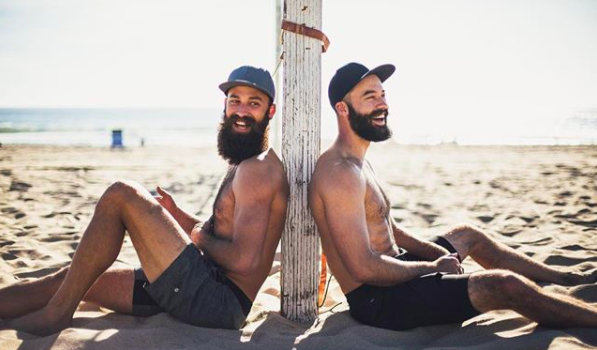
Wednesday Mar 21, 2018
Maddison McKibbin and the making of the Beard Bros
Wednesday Mar 21, 2018
Wednesday Mar 21, 2018
The McKibbins are not all that different from any other set of siblings, if not a touch more hirsute and athletically inclined.
They fight. They argue. They point out one another’s flaws, sometimes a bit gleefully. And they do this often. Often enough for Riley McKibbin to film a video blog detailing the frustrations of volleyball, and playing volleyball with your brother, and how to deal with these frustrations.
“I think we would both agree that we have a hard time listening to each other,” Maddison McKibbin said on SANDCAST: Beach Volleyball with Tri Bourne and Travis Mewhirter. “Just because you’re brothers, if you hear one word of critique, you go straight back to the last thing he messed up on, and you’re thinking ‘Dude don’t talk to me when you’re doing this.’ You revert to it and it’s so bad. I would never treat anyone else like that.
“It’s this battle of trying to take suggestions and criticisms and critiques constructively and I know that sounds very basic but it’s hard when it’s your brother.”
Their relationship is at once their biggest strength and vulnerability. On a tip from defender Geena Urango, a fellow USC Trojan, the McKibbins now pick out three aspects or skills each of them want to work on in practice, which has both improved their volleyball and reduced the resistance to critiques from a sibling.
“If we mess up on something else, it’s ‘I’m not going to get mad at you, you’re not going to get mad at me, we’re just working on these three things,’” Maddison said. “And then enforcing at the end of practice one thing that went well and one thing that we’re working on. The idea is to cut down on the frustration and whatever you want to call it between you and your partner, because when you have a plan, you can call someone out if you really want to, like ‘Hey, Riley, you suck at number two.’”
It’s why this past season was so different for Maddison, who hadn’t played with anyone aside from Riley since 2011. When Riley hurt his hand in the season-opening event in Huntington Beach, Maddison was forced to explore partner options, to play with someone he didn’t share a childhood with, didn’t share the USC court with, didn’t travel throughout Europe with, didn’t grind through the qualifiers with.
What he found was this: Finding, and keeping, partners, is tough. Meshing with new partners is tough.
Playing without your brother is kinda weird.
He played Austin and New York with Reid Priddy, and in the subsequent shuffle prior to Seattle, he wound up with Ty Loomis. And after getting swept out of Seattle, they stunned no small number of people in winning San Francisco just two weeks later.
Most would have thought Maddison and Loomis would stick together. A no-brainer. They were champs!
Then again, most don’t understand the bond between the Beard Brothers.
“When I played with Reid I told him ‘When Riley’s coming back, I’m playing with Riley’ and it was the same thing I told to Ty,” Maddison said. “And Ty wanted to keep going and I completely understand. But to me, I’m an incredibly loyal person, and I love the game of beach volleyball, but we both know that, financially, it’s hard to sustain, and playing with my brother, I love playing with my brother.
“When we win, it’s that much better, and when we lose, it sucks. In order to make this lifestyle sustainable, we have to create content, we have to develop a brand within the sport, and I’m not saying I’m only playing with him because of our brand, but when you win with someone who’s had your back for that long, or has encouraged you to pursue so many different things, that in itself is enough to say that ‘I know I had success with this one person but I’d much rather win with you.’
So my goal is: ‘I want to win with you. I want to be these idiotic beard brothers on the AVP. That’s where I want to be in life.”
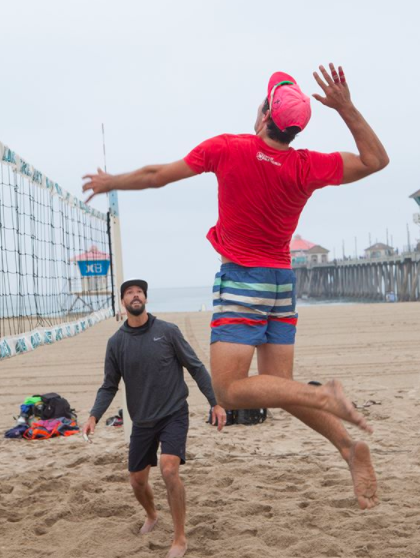
Monday Mar 19, 2018
Newcomers highlight first Norceca of the beach volleyball season
Monday Mar 19, 2018
Monday Mar 19, 2018
Troy Field was, in his own words, “terrified.”
“Just so scared to mess up,” he said on SANDCAST: Beach Volleyball with Tri Bourne and Travis Mewhirter, “to, you know, disappoint this incredible athlete.”
It helped, then, that the incredible athlete in question during last week’s Norceca qualifier was Reid Priddy, and few in volleyball understand what Field was going through more than Priddy. He’s been to four Olympics. He’s won a gold medal. He’s won a bronze medal. In just a single year on the beach, he was one point away from making a final, in San Francisco.
“He’s got some pretty amazing wisdom to offer,” Field said.
Priddy told the 24-year-old that nerves are good. Nerves mean you’re excited, that you care. Focus on what you can control. Not passing or setting or swinging or serving. Just breathing. Which is exactly what Field did.
“I’d see him take a deep breath, which reminded me to take a deep breath,” Field said. Simple. And effective.
Priddy and Field opened with a three-set win over Adam Roberts and another up-and-comer, Spencer Sauter, which put them into the de facto finals – two teams come out of a Norceca qualifier, so the actual final match is of little consequence – against 2017 AVP Rookie of the Year Eric Zaun and veteran blocker Ed Ratledge.
“It was just high level volleyball,” Field said. “Just side out after side out after side out. We battled, battled, battled and took the first set like 27-25. With all that momentum, we were able to figure out what they were doing and Zaun wasn’t really hitting any balls and we were able to work our defense around that and we ended up winning like 21-16 or 21-15 or something like that… Reid was playing out of his mind, just making unbelievable defensive plays.”
It didn’t much matter that the two would lose the next match against Avery Drost and Chase Frishman. They were in, earning spots into a series of tournaments, two of which will be in Mexico, the final in Cuba.
Those three tournaments, should the two choose to play in all of them – they are more than likely not, as the Cuba tournament will run too close to AVP/FIVB Huntington Beach in the first week of May – would add up to one more professional tournament than Field has played in his career. In 2017, he played in a pair of AVPs, failing to make it out of the Hermosa Beach qualifier before making it through in Manhattan Beach with Puerto Rican Orlando Irizarry.
“It’s pretty unreal,” he said. “I’ve never been the person to get super overly excited because I feel like the more you build it up you’ll get disappointed. Everyone has been telling me to just enjoy the moment.”
On the women’s side, another newcomer, Brittany Howard, earned a bid as well. There’s a better chance you’ve heard of Howard than Field. She competed for four years indoors at Stanford before doing a grad year on the beach for Pepperdine, though she was so rusty on the beach that she admitted to DiG Magazine that “I was terrible.”
It’s become apparent she’s a quick learner. Playing with Kelly Reeves, the 2016 AVP Rookie of the Year, Howard beat Amanda Dowdy and Irene Pollock and then the new partnership of top-seeded Kelley Larsen and Emily Stockman, earning their Norceca bid despite also losing the final match to Kim Smith and Mackenzie Ponnet.
“I definitely kind of explored my options,” Reeves said on SANDCAST. “Brittany Howard was always someone I’d been watching from afar and I told her I’d love to get in the sand and try it out. We did and it just felt super comfortable, I don’t know, the chemistry thing was big. We’re definitely volleyball people and I definitely understood where she was as far as up-and-coming. Just the first time we stepped in the sand it was ‘Oh, this girl, she’s got some game.’”
Game enough to have qualified for the final three events of the AVP season, in Hermosa Beach, Manhattan Beach and Chicago, respectively. Game enough to have actually beaten Reeves in Manhattan Beach.
Game enough to have found her new partner for the 2018 season.
Reeves played the majority of the 2017 season with Jen Fopma, though with Fopma pregnant, she had to find either a new blocker or a scrappy defender to play with in 2018. Enter Howard.
“She just did some really funky stuff like ‘Ok I can work with that,’” Reeves recalled when she played Howard. “And then looking to next year, knowing Jen was out, I was like ‘Alright she’s definitely someone I would want to play with.' As soon as we got in the sand, there was just this one play, she had this nice scoop, maybe a block pull move, and she dug it and I set her and she just crushed this ball and I was like ‘Ok she’s got some game.’”
They proved as much last week, and now they’ll be taking two trips to Mexico though the third stop, in Cuba, is unlikely, for the same reasons as Field and Priddy will likely be skipping as well. There’s Huntington, with more to prove, more to learn, a bigger platform on which to play.
“We’re both still new to the game,” Reeves said. “Grantred this is my third season but I’m still learning a ton and she’s still learning a ton and it’s fun to learn and grow with someone. We’re hungry and eager to just get better and I think that’s something I really like about our partnership.”
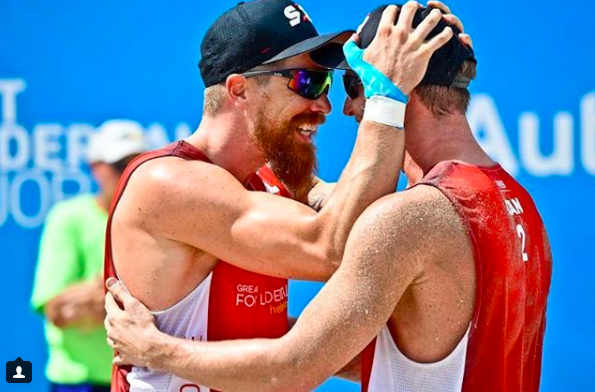
Wednesday Mar 07, 2018
There's no crying in volleyball, with Sam Schachter and Sam Pedlow
Wednesday Mar 07, 2018
Wednesday Mar 07, 2018
Sam Pedlow remembers the crying.
There he was, a full-fledged Canadian, playing hockey, his country’s past-time sport, the American equivalent of football, at a fairly high level, living up to the expectations of all of those around him.
And then he abandoned it.
He left a youth playoff hockey game for a volleyball practice. In some parts of Canada that might very well be considered treason.
“I felt like I was disappointing everybody,” Pedlow recalled on SANDCAST: Beach Volleyball with Tri Bourne and Travis Mewhirter. “I was no longer playing hockey. But in order for our sport to continue to survive we need people to continually replace us. I want to be a place where people are continually beating me. Our program has been on the rise these past five years. We need to keep that momentum going, and we need people to fill in for us when we ultimately retire.”
There is not an especially urgent rush in that regard. Should Pedlow and his partner, 6-foot-6 defender Sam Schachter, remain together, they could legitimately have three more Olympic Games in their futures. Pedlow is just 30, Schachter, already an Olympian in 2016 with Josh Binstock, just 27.
As partners, they’re only beginning to hit their stride, logging their eighth consecutive top 10 finish on the FIVB World Tour with a ninth in Fort Lauderdale this past weekend, beating Austrians Clemens Doppler and Alexander Horst before bowing out in three sets to Spain’s Adrian Gavira and Pablo Herrera.
But beyond their own individual gain and fame, which is on the rise, thanks to the active and wonderful social media from Pedlow, they’re looking to develop a latent beach volleyball community in Canada, which hasn’t won an Olympic medal since 1996, when John Child and Mark Heese claimed bronze in 1996. Schachter’s ninth-place finish in Rio was Canada’s best since 2004.
“We need people starting to play all over the place,” Schachter said. “This sport is so unbelievable because you don’t have to be the biggest and strongest like you would in indoor. It’s so much a mental game where you have to be smart and strategy and you don’t have a coach so there’s an independence factor and the girls are beautiful.”
Looks aside, the Canadian women’s program, which has yet to win an Olympic medal, is becoming a bona fide power in its own right. Two teams – Sarah Pavan and Melissa Humana-Paredes and Heather Bansley and Brandie Wilkerson – claimed top-10 finishes in Florida, and both landed in the top 10 in the world rankings at the close of the 2017 season.
The only team with more points than Pavan and Humana-Paredes? Brazil’s Talita and Larissa, excellent company to be keeping for a hockey-crazed country.
“Our women’s program is going to be strong for a long time,” Pedlow said.
With Pedlow and Schachter climbing the world ranks, the men’s program has an auspicious look as well.
Perhaps soon enough, with a few more top finishes on the word tour, there will be no more crying in volleyball.
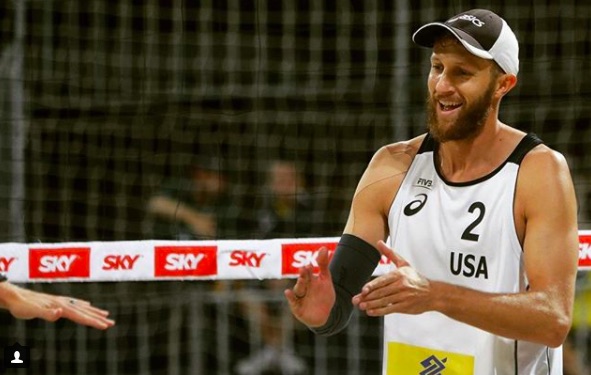
Monday Mar 05, 2018
Breaking down the Fort Lauderdale Major with Theo Brunner
Monday Mar 05, 2018
Monday Mar 05, 2018
Fifth place?
Had you told Theo Brunner, prior to the Fort Lauderdale Major this past weekend, that he’d take fifth place, in a field featuring every top beach volleyball team in the world, after being limited in training, admittedly a bit out of shape, with a new partner, after re-injuring his bad ankle and spraining his other... yeah, he’d have taken that.
He was, as he said on SANDCAST: Beach Volleyball with Tri Bourne and Travis Mewhirter, just happy to play at all.
At the end of last season, Brunner had sprained his ankle, an injury that has limited his training “70 or 80 percent” this off-season, he said. Add into that the fact that he was playing with a new partner in John Hyden, and add onto that the fact that he mildly reinjured that same ankle a few weeks ago, and onto that another sprain of the opposite ankle his first day of training in Fort Lauderdale and fifth isn’t too shabby.
“This was just ridiculous,” he said. “I feel so out of shape…I’m normally pretty on top of my conditioning, probably do too much in the off-season as far as running all the time before practice, on the gym, in the sand, and I couldn’t do that this year. There were times when I was just struggling to catch my breath and I was like ‘Dude you’re probably not going to win this set. Just collect yourself, get a little bit going.’
“It’s just hot and humid out there, and if you’re gas to the floor the entire match, even if you’re in really good shape, it’s not going to be the best result for you. I was just trying to conserve, and when things were getting out of hand, I’m not jumping max and trying to slam this ball, I’m trying to conserve so I can get up on my block and side out consistently the next game.”
Brunner admitted that perhaps that’s not the best spot to be in, though here’s the thing: It worked. Four of his five matches went to three sets, and Brunner and Hyden came out on top in three of them.
They beat Austrians Martin Ermacora and Moritz Pristauz-Telsnigg 15-8 in the third set in a do-or-die match in the modified pool play format, eliminated Canadians Ben Saxton and Grant O’Gorman 15-11 in the first round of playoffs, survived, 18-16, over Jake Gibb and Taylor Crabb to get to the quarterfinals before succumbing, 13-15, in the third to Brazilians Pedro Solberg and George Wanderley in a match that Brunner knows he should have won.
The Americans were up, 13-10, before giving up five straight.
“I’ve been reliving it the last 24 hours,” he said. “I went back and watched the video and they made a couple good plays… but I had a mindset ‘Alright, it’s a little windy, the sets are blowing off the net, I’m just going to hit a good shot, make them work for it.’ I think I should have just been a little more terminal… I think I tried to be a little too cute.”
Next up for Brunner and Hyden, as it is for the majority of the Americans, is Doha from March 6-10, then Xiamen in mid-April before a four-star in Huntington Beach the first week of May.
“Notwithstanding how we went out,” he said. “It was a good result for us.”
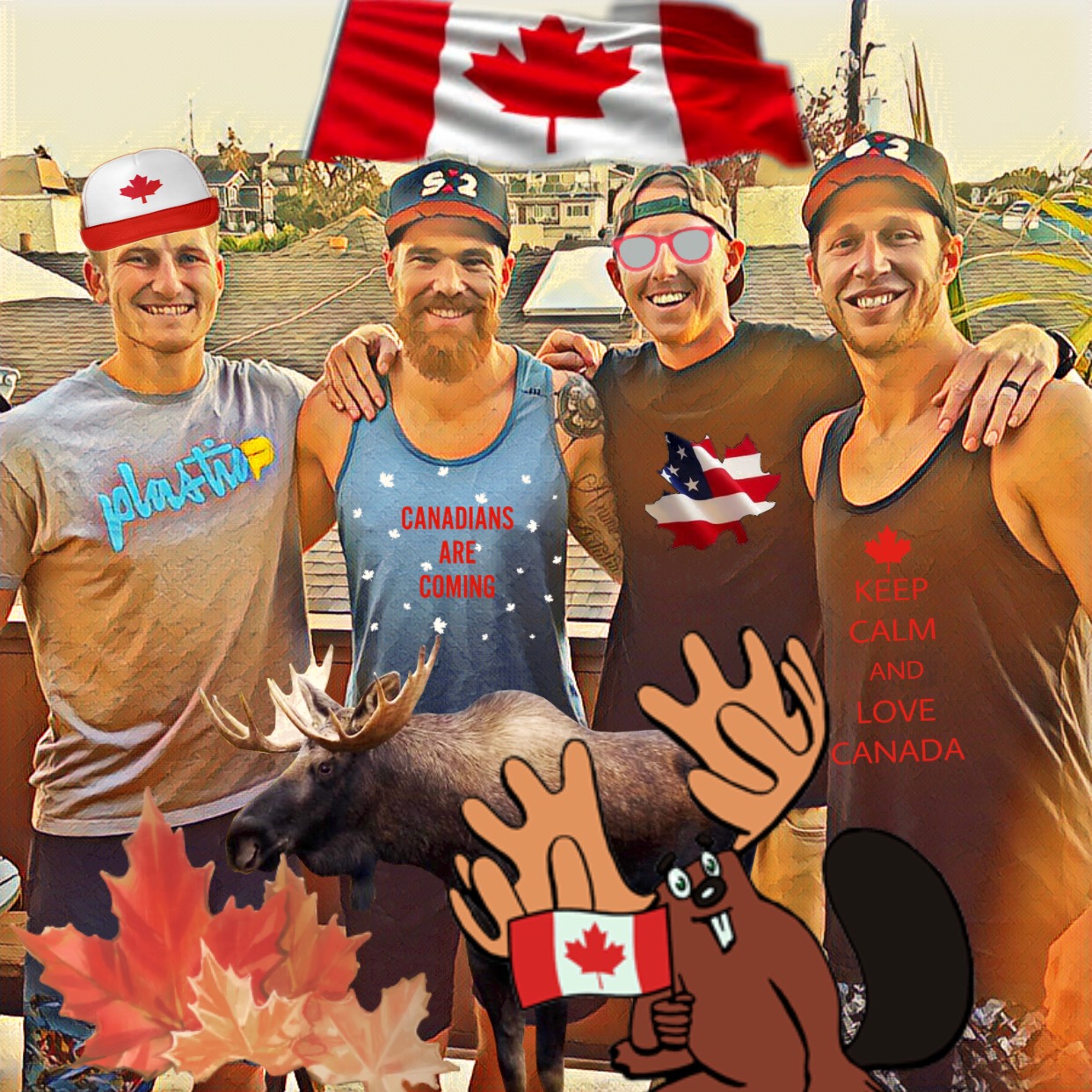
Wednesday Feb 28, 2018
One and done volleyball with Sam Schachter and Sam Pedlow
Wednesday Feb 28, 2018
Wednesday Feb 28, 2018
April is when the full-time volleyball begins.
But the real battle annually begins in late January and early February, when Canadians Sam Schachter and Sam Pedlow stop by Hermosa Beach for a few weeks of high level training prior to FIVB Fort Lauderdale, the first major international event every year.
The real battles, of course, do not take place on the courts themselves. Nah, they’re on Instagram, where Pedlow has curated one of the best social media accounts across all of sports, right up there, it’s easy to argue, with Joel Embiid, the troll savant of the NBA.
He’ll post highlights and bloopers, funny sound bytes and inspirational quotes, a little bit of everything. What makes it fun is that for the few weeks the Canadians are in town, the U.S. players they practice with – namely Jake Gibb and Taylor Crabb, Casey Patterson and Stafford Slick, Phil Dalhausser and Nick Lucena in Florida prior to Fort Lauderdale – fire it right back in a friendly, if not still competitive, manner.
“It’s a self-proclaimed rivalry by Casey and Slick,” Schachter said, laughing.
“In Canada, beach volleyball isn’t as publicized as it is in the States,” Pedlow, the more active of the two, added. “They do a great job of making everybody know who you are. If we want people to know who we are we need to do some work, do some ground work. Every time we come down to the United States and play with these guys and post some videos it’s good for us, because now we might get some Sam Times Two fans.”
Patterson did his part in making sure his followers knew the Sams plays were fake (they’re not), while his are real (they are).
“People think we’re kinda going at each other but it’s all in good fun,” Pedlow said. “Now, I don’t post a whole lot of rallies we don’t win.”
If you follow them closely enough, you’ll know that isn’t true. Pedlow and Schachter both enjoy a good blooper as much as the rest of us. But here’s the thing: The rallies they lose are becoming exceedingly harder to come by.
Last year, 2017, marked their first as a team, Schachter having needed a replacement for the since-retired Josh Binstock, and Pedlow in potential need of an upgrade from Grant O’Gorman (perfectly enough, the Sams are in the same pool as countrymen O’Gorman and Ben Saxton, former partner of transfer American Chaim Schalk).
Their first tournament together was at this very same event a year ago, where they took ninth, having beaten O’Gorman and Michael Plantinga and Austrian Olympian Robin Seidl and Tobias Winter to break pool.
Eventually, they were knocked out by Gibb and Crabb, though it was an auspicious start for what would become Pedlow’s best season, one in which the Sams – or SamX2 or Sam Squared, whichever you prefer – would improve upon their seed in every single FIVB tournament they played in. Those finishes are thanks to what the two call “one and done volleyball,” a nod to their height and physicality.
Pedlow, the 2017 Most Improved Player on the FIVB, stands 6-foot-5 and Schachter, the defender, 6-foot-6. They’re the first to admit they won’t dig as many balls as, say, a Crabb, who’s light and nimble and quicksilver fast, but when they do, they’re more likely to put it away, relying more on offensive and transition efficiency than long, dragged out rallies.
They’re ok with that. It works.
Most importantly, for the fans and those following on social media: It’s fun to watch.